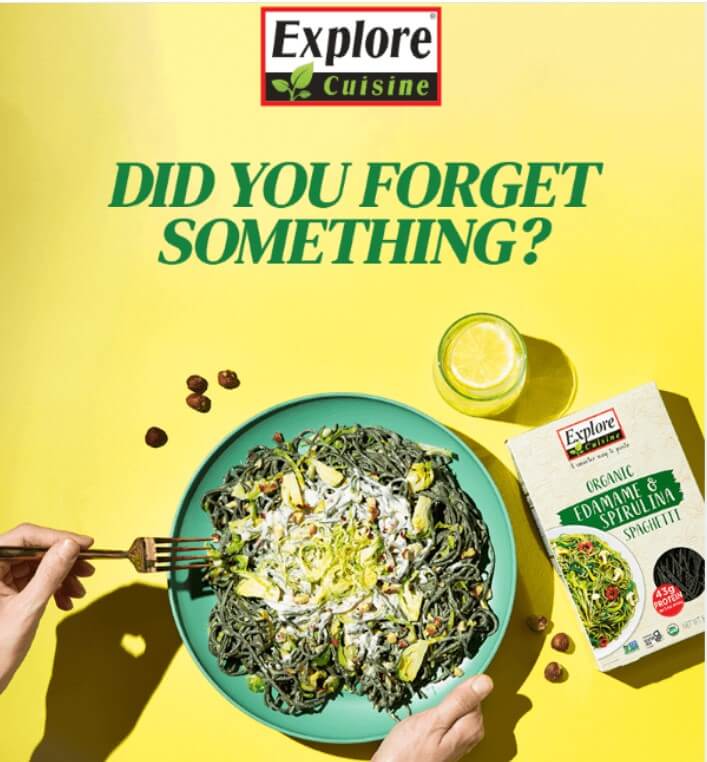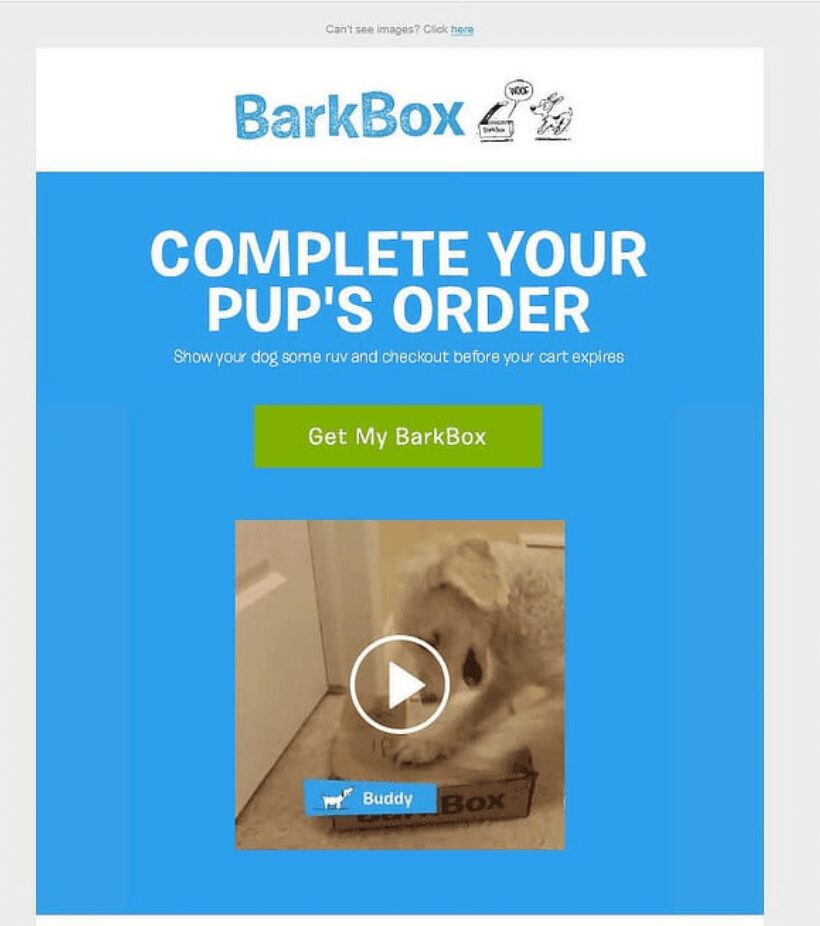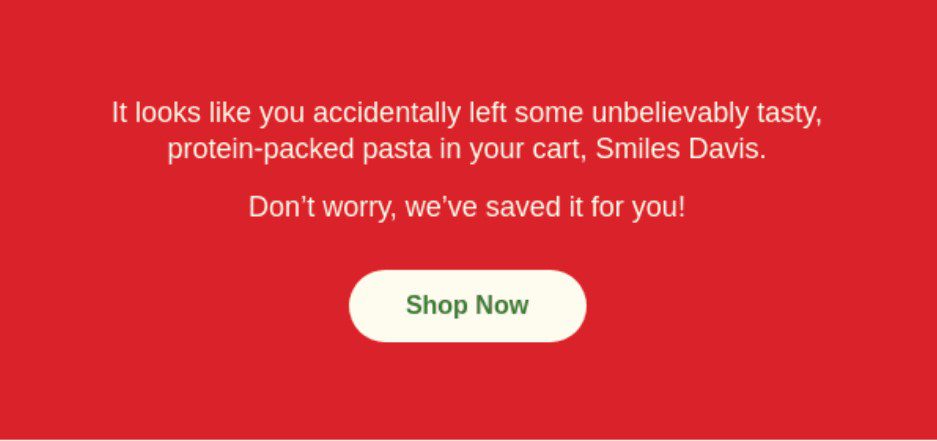
Source: Really Good Emails
If you’ve ever wondered why so many customers abandon carts on your site, you’re not alone. In fact, most businesses don’t realize that cart abandonment rates are high across the ecommerce industry.
There’s nothing more frustrating than building up a great product and seeing it get added to multiple carts, only for most of them to end up abandoned. A great abandoned cart email can help your business fight the odds and drive up sales with minimal investment. Read on to learn what changes you can make to reduce cart abandonment and find examples of great emails.
Table of Contents
Why Do Carts Get Abandoned?
About 70% of users will abandon their carts when shopping online, and while this percentage might seem startling at first glance, there is another side to the story here. Abandoned carts certainly can represent lost revenue, but there are a few factors that businesses can optimize to turn this regular part of online shopping into a real sales opportunity.
Shipping Costs
High shipping costs are a leading cause of cart abandonment rates. Nothing is more unappealing to a potential customer than adding a great item to their cart only to be surprised by inconvenient shipping fees.
If you’re looking to optimize your abandoned cart emails, you’ll have to account for this possibility. Great copy can only do so much if your customers are turned off by logistical issues. Luckily, tons of major ecommerce platforms like BigCommerce now offer built-in logistics solutions to help with shipping.
Abandoned cart emails can still help here—for example, throwing in a discount code could potentially offset customer shipping fees in the short term. However, you’ll have to get to the root of the problem if you want to retain that customer for the long term.
For most businesses, this is a matter of transparency. It’s in your best interest to be as clear as possible about all the costs that customers are going to incur if they shop on your website. Holding off on revealing packaging charges until the very last stage of the checkout process, for example, is sure to frustrate customers.
Lots of ecommerce businesses are pushing for a transparent approach here by allowing customers to instantly calculate shipping fees and delivery times by entering their zip codes right on the product page. Consider displaying delivery options or the minimum purchase required to qualify for free shipping so customers feel a sense of control over shipping costs prior to reaching the checkout page.

Natural Abandonment
While it’s always a good idea to send abandoned cart emails, it’s worth remembering that there are perfectly rational reasons for customers to leave a website before checking out. This segment of shoppers accounts for a significant chunk of abandoned carts.
- Window Shopping: As many as 67% of shoppers in the US admit to window shopping on their phones. They may visit your site, see something they like, and effectively use the cart as a “save for later” button. Many examples of abandoned cart emails target this section of users with the intent of persuading them to return by sweetening the deal, but this isn’t always necessary.
Sometimes it works just to remind the user that they have something in their cart and give them a compelling, brand-appropriate call to complete the purchase.

Source: OptinMonster
Great abandoned cart emails aside, the very nature of ecommerce platforms encourages users to look around and explore their options before committing to a purchase. Some shoppers might be comparing two different products, while others might just be using your cart as a personal wishlist.
Invite customers to take the next step, but don’t be pushy. Many users in this group are already brand loyal; they just aren’t finishing their purchase today.
- No Discounts: There’s a reason why lots of successful examples of abandoned cart emails include coupon codes. We live in the age of discounts, and your customers don’t just want one, they expect one. Whether it’s a code for $5 off or even free two-day shipping, large platforms like Amazon can edge the competition by offering incentives that smaller businesses often can’t afford.

You might consider adding discount codes to your abandoned cart emails as an incentive to make a purchase, but be mindful of the behavior you’re encouraging.
For example, come back to get 20% off when you finish your purchase is telling users that they should abandon their carts more often. They might get another discount!
Instead, something like come back to enjoy 20% off sitewide all weekend informs customers about a discount they may have missed earlier while still suggesting some urgency to revisit the site.
- Inconvenient Checkouts: An illogical checkout process can cause your customers to lose trust and click off the page. Your goal should be to minimize friction and create a smooth checkout experience. Follow the usual order of cart->billing and shipping info-> order preview-> payment for the best results.
Shoppers can also find other aspects of the checkout experience to be inconvenient. For example, asking for too much personal information on the checkout page can quickly become a source of frustration. Abandoned cart emails won’t be of much use here, so if you’re finding that emails are not improving your sales, it may be time to reexamine your checkout user experience.
If you’re looking to increase ecommerce sales by following examples of great abandoned cart emails, the first thing you should do is figure out the pain points for your business. An email that targets these particular issues will be more effective at driving a sale. Once you’ve spotted those problems, use these tips to optimize your emails.
7 Tips For Better Abandoned Cart Emails
1. Use Simple Reminders
Experts estimate ecommerce sales could increase by up to 90% simply by reducing cart abandonment. With stakes this high, businesses often feel tempted into writing elaborate emails as a way of bringing back potential customers.
Surprisingly, it’s the simple, automated emails that perform the best. Your email is a friendly reminder—that’s it. Notable examples of cart abandonment emails get to the point and remind the shopper of what they’ve left behind, preferably with a picture.
For most abandoned cart emails, you’ll want to stick to the basics. A logo followed by a picture of the item and a line of copy reminding the customer what they were interested in is usually enough. Of course, also include a button that takes them back to their cart to finish the purchase.
2. Better Copy
Writing better copy shows your customers that you care. If you can demonstrate that you’re willing to go the extra mile for shoppers with catchy (but brief!) writing, they’ll be more likely to give your products another chance.
A great place to start is by personalizing your emails. If the user has already created an account, it should be easy to automate emails that use their first names instead of generic copy that they’ve probably read before.

Source: Really Good Emails
It’s worth mentioning that you don’t have to rely on personalization for effective emails. Tons of popular examples of abandoned cart emails have proven effective with their catchy headers, appealing visuals, and punchy calls-to-action (CTAs).
3. Improved CTAs
Not all abandonments occur out of forgetfulness. Sometimes, the offer just might not be sweet enough. You can bridge that gap with an abandoned cart email built around a specific call to action.
Wrap up your promo offer in a punchy and attention-grabbing CTA button that automatically applies the offer to their cart. This simple tweak might not seem like much, but reducing the amount of work that your shoppers have to do, even by a little bit, can pay great dividends. Emphasize verbs in your CTA to motivate action. For example, ‘Get 30% Off’ will generally perform much better than just ‘30% Off’.
Not sure how to determine the best CTAs for your emails? That’s where A/B testing comes in.
4. Take Advantage of A/B Testing
It’s always a good idea to carry out A/B testing when you’re working with a new design or even a change in messaging. For example, let’s say you’d like to optimize your abandoned cart emails with a new CTA. Segment your audience list and send out emails containing the new CTA to one segment with the other receiving the old format. Doing this provides concrete data on what works and what doesn’t, making it easy for marketers to fine-tune their campaigns.
Keep in mind that A/B testing is all about iterations. Just because you’ve figured out which CTA or subject line performs best doesn’t mean you should stop optimizing your abandoned cart emails. Keep testing the winning versions against other options until you find the one that delivers the best results.
5. Time Your Outreach
Timing is everything when you’re coming up with ecommerce strategies. There’s a sweet spot for every email, and just reaching your shoppers’ inboxes at the right time can be half the battle. If you wait too long to reach out to customers, they might have already forgotten what they were interested in. Do it too soon, and it might not be enough to prompt a change of heart.
So what’s the best time? Data indicates that waiting an hour to send the email results in a 16% conversion rate, far higher than other alternatives. Some businesses will send out two additional abandoned cart emails, the first being sent out a day after abandonment, and the second one going out three days later.
6. Include a Countdown
Just like offering a discount code, adding a countdown is a great way to bring shoppers back into the fold. Let them know that the item they left has been reserved for a limited time and that they can click the CTA button to claim it and check out right away. Scarcity can be a highly motivating factor if you’re looking to drive sales.
Of course, you’ll want to make sure you do actually have enough stock to reserve items for multiple potential customers at a time, as it’s entirely possible that they might choose not to complete their purchase after all.
Businesses can also use abandoned cart emails to upsell other products. For example, you could include a tab in your abandoned cart email that recommends similar products that the customer might be interested in. These emails are a great opportunity to increase average order values since you’ve already caught their attention with catchy visuals and well-written copy.
7. Include Reviews
Purchasing from a new store can be a daunting prospect. Often, customers that are ready and willing to complete a purchase will get cold feet at the very last minute, worried that the product won’t be up to par.

Your abandoned cart emails are the perfect opportunity to make up for that trust deficit and assure your customers that they can rely on you. Try including a small section in your email with a few positive reviews for the product in question. You could also use this as a chance to upsell similar products by including reviews for them, too–if space allows.
Grow Your Store Today
The best examples of abandoned cart emails stick to the basics and do it well. Creating a rock-solid email strategy can help your ecommerce store recoup lost customers and become a long-term source of growth.
To fine-tune your strategy, reach out to Coalition Technologies, a digital marketing agency with a proven track record of growing thousands of businesses with email marketing. Get in touch for a free strategy review.


